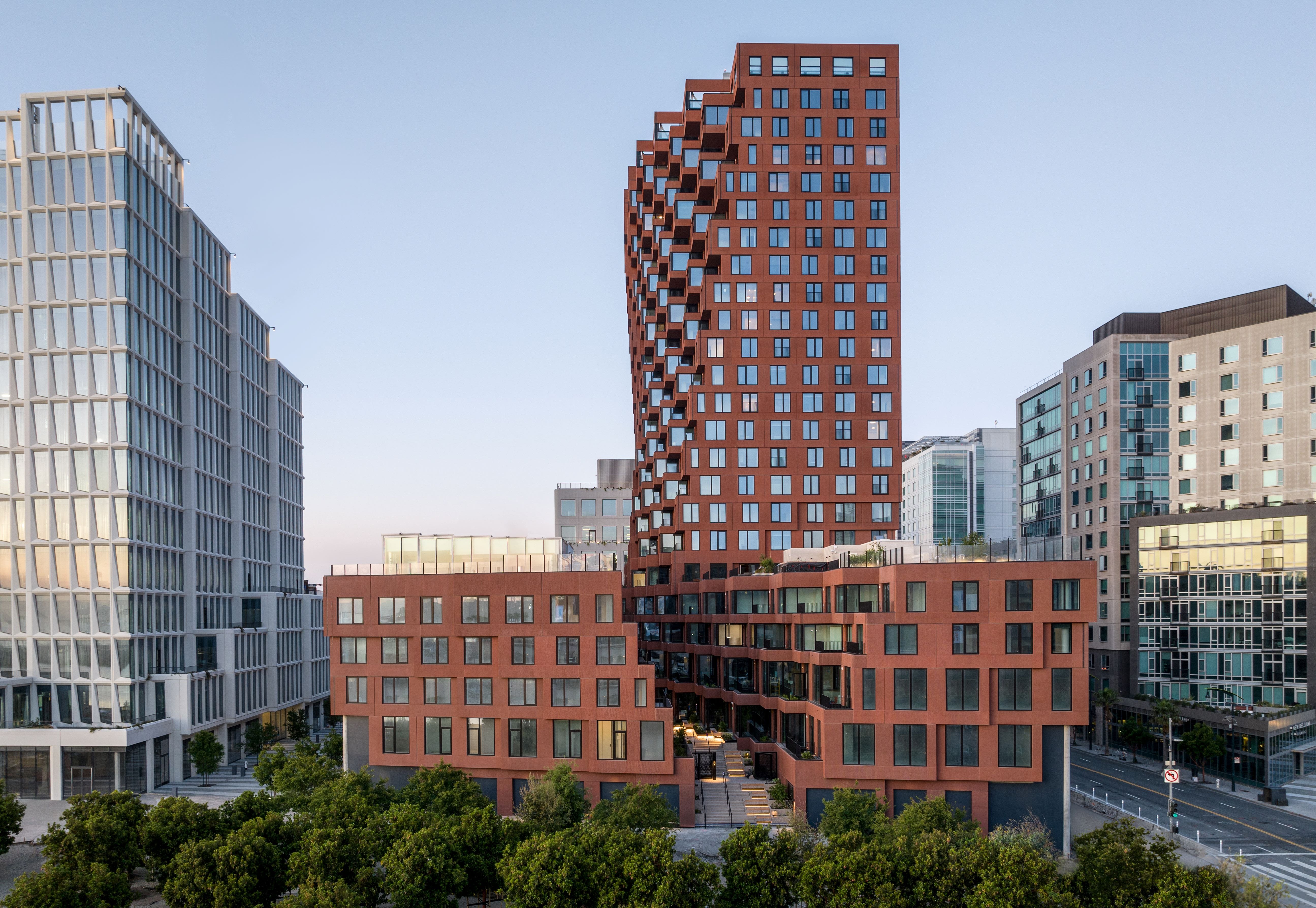This extensive project aims to develop one of the most prominent undeveloped sites in the Mission Bay neighborhood of San Francisco. Ten years in the making, this joint venture between the San Francisco Giants, Tishman Speyer, and the Port of San Francisco has collaborated with the community to bring the vision of Mission Rock to life. Clark Pacific manufactured all the cladding and installed the windows in the factory for Buildings A, F, and G. Each building is unique, exciting, and memorable, drawing inspiration from California’s natural topography and San Francisco’s urban landscape.
Mission Rock A:
Building A, also known as “The Canyon,” encompasses 376,000 square feet and stands 23 stories tall. This mixed-use building features affordable housing, shops, and office space. Its facade is particularly notable for its uniqueness and complexity, incorporating a variety of materials such as glass fiber reinforced concrete (GFRC) prefabricated panels, concrete tiles, aluminum, steel, floor-to-ceiling windows, and wood seating. The GFRC panels manufactured by Clark Pacific are texturized with an uneven surface to emulate a rocky exterior.
Mission Rock G:
Building G, which will serve as the new Visa headquarters, is a 13-story office building with a total area of 299,600 square feet. The project aims to achieve LEED Gold Certification and will accommodate up to 1,500 Visa employees. It features ground-floor retail, multi-level roof terraces, a main roof deck, and a creatively designed facade inspired by the geologic formations of California’s Devil’s Postpile National Monument near Yosemite. The precast panels have fluted profiles and a large window-to-wall ratio (70/30). The roof precast is finished on both the front and back sides, providing a distinctive event space, while the corner window panels are cast monolithically in “v forms.”
Mission Rock F:
Building F, also known as “The Mesa,” is a 315,000-square-foot residential tower with 254 units, including 96 apartments, and features extensive amenity and retail spaces. The facade of Building F draws inspiration from the cascading waterfalls of Yosemite, with a series of terraces that step back from the street, creating a dynamic form that changes with the viewer’s perspective. The design incorporates over 200,000 glazed green tiles, integrated into the Infinite Facade and Architectural Precast systems.





